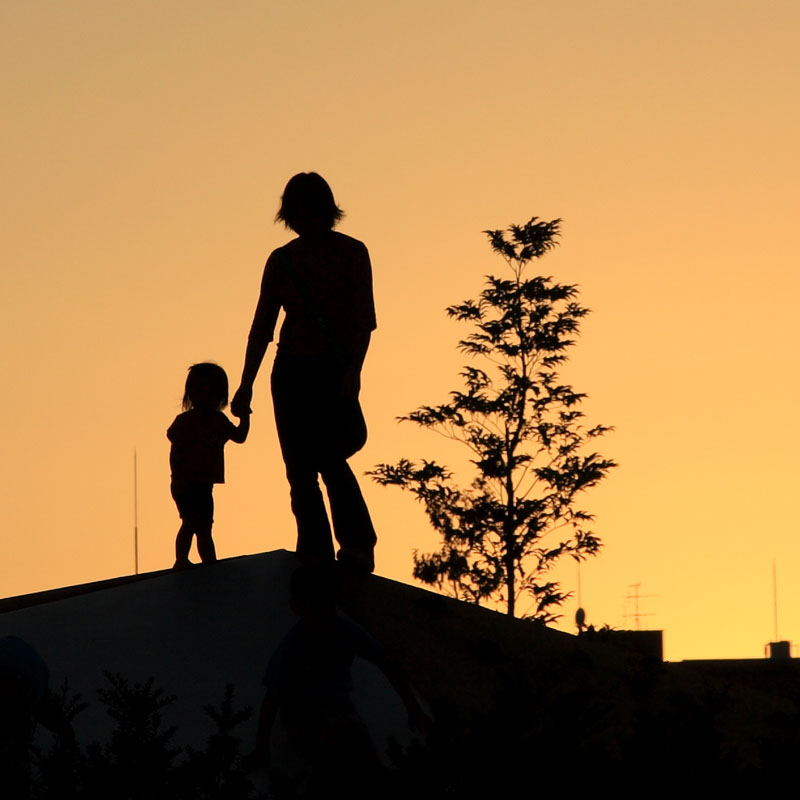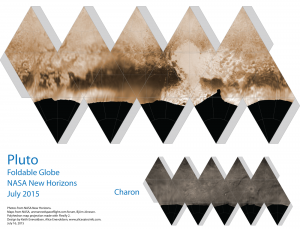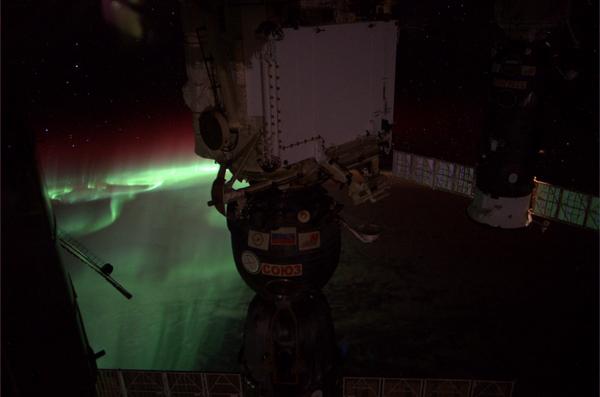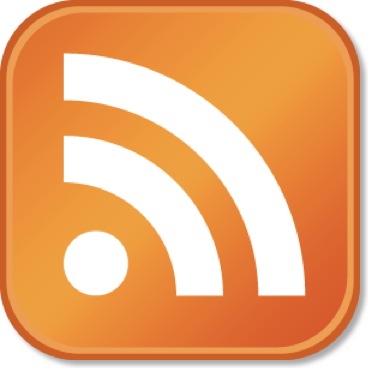Archive for the ‘AstroInfo Article’ Category
 December 21st Winter Solstice Sunset Watch – 2015
December 21st Winter Solstice Sunset Watch – 2015
It’s time for the 27th seasonal sunset watch!
- When: Monday, December 21st at 4:05pm (so come at 3:45pm)
- Actual sunset is supposed to be at 7:05pm, but we have noticed that the Sun sets about 10 minutes earlier than the USNO says, because of the horizon altitude.
- The equinox moment is at Monday, December 21st at 8:40pm
- Where: Solstice Park – all the way up the hill from the tennis courts (or, if you’re not in Seattle, wherever you have a view of the western horizon!)
- Who: Everyone welcome, as usual.
Come watch the sunset at Solstice Park in West Seattle. I’ll be there even if it is cloudy because sometimes the Sun peeks through just as it begins to set, but if it is driving rain or sleet I’m staying home with some hot tea!
If you’re interested – here’s the timing of various celestial events from Seattle, courtesy of the U.S. Naval Observatory Astronomical Applications Department:
Sun and Moon Data for One Day
Solstice Moment: Monday, December 21, 2015 at 8:40:00 PM
Universal Time: Dec 22 04 48Seattle, King County, WA (Longitude W122° 20′, Latitude N47° 38′)
December 21, 2015 Pacific Standard Time
Sun
Begin civil twilight 7:19 a.m.
Sunrise 7:55 a.m.
Sun transit 12:07 p.m.
Sunset 4:20 p.m.
End civil twilight 4:56 p.m.Moon
Moonset 3:19 a.m.
Moonrise 2:01 p.m.
Moon transit 9:11 p.m.
Moonset 4:31 a.m. on following day
Closest Primary Moon Phase: First Quarter on December 18, 2015 at 7:14 a.m. (local standard time)Phase of the Moon on December 21, 2015: Waxing Gibbous with 84% of the Moon’s visible disk illuminated.
This event is my part of the NASA’s Solar System Ambassador program, and thanks to West Seattle Blog for publicizing all of them!
Everyone is welcome, see you there!
![]()
~ A l i c e !
 September 23 Fall Equinox Sunset Watch – 2015
September 23 Fall Equinox Sunset Watch – 2015
It’s time for the 26th seasonal sunset watch!
- When: Wednesday, September 23 at 6:55pm (so come at 6:40pm)
- Actual sunset is supposed to be at 7:05pm, but we have noticed that the Sun sets about 10 minutes earlier than the USNO says, because of the horizon altitude.
- The equinox moment is at Wednesday, September 23 at 1:20am … but we’re watching the sunset the night before not the sunrise because of how the park lines up.
- Where: Solstice Park – all the way up the hill from the tennis courts (or, if you’re not in Seattle, wherever you have a view of the western horizon!)
- Who: Everyone welcome, as usual.
Come watch the sunset at Solstice Park in West Seattle. I’ll be there even if it is cloudy because sometimes the Sun peeks through just as it begins to set, but if it is driving rain or sleet I’m staying home with some hot tea!
If you’re interested – here’s the timing of various celestial events from Seattle, courtesy of the U.S. Naval Observatory Astronomical Applications Department:
Sun and Moon Data for One Day
Seattle, King County, WA (Longitude W122° 20′, Latitude N47° 38′)
September 23, 2015 Pacific Daylight Time
Sun
Begin civil twilight 6:26 a.m.
Sunrise 6:57 a.m.
Sun transit 1:02 p.m.
Sunset 7:05 p.m.
End civil twilight 7:36 p.m.
Moon
Moonset 1:28 a.m.
Moonrise 4:27 p.m.
Moon transit 9:29 p.m.
Moonset 2:36 a.m. on following day
Closest Primary Moon Phase: First Quarter on September 21, 2015 at 1:59 a.m. (local daylight time)Phase of the Moon on September 23, 2015: Waxing Gibbous with 76% of the Moon’s visible disk illuminated.
This event is my part of the NASA’s Solar System Ambassador program, and thanks to West Seattle Blog for publicizing all of them!
Everyone is welcome, see you there!
![]()
~ A l i c e !
 Aurora Viewing from Seattle — Basic Tips
Aurora Viewing from Seattle — Basic Tips
Aurora viewing from Seattle, basic info, tips, locations and resources.
Summary: ALWAYS LOOK NORTH, and expect it to be dim. Predicting auroras is like predicting rainbows. Predicting the conditions for them is more accurate than predicting the event itself.
Cloudcover prediction for tonight at 11pm:
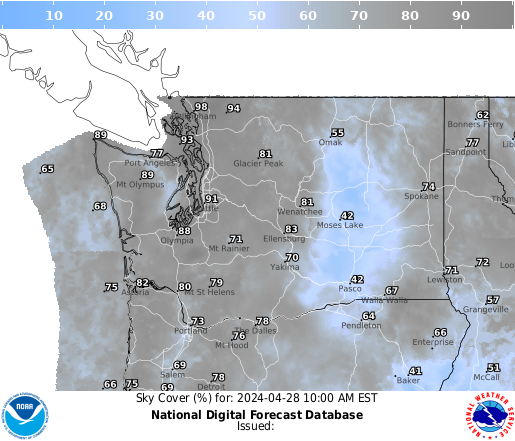
This image should have today’s date on it. If it does not, click on the image and choose “Sky Cover, 11pm” from the table on the left.
Cloudcover information from NOAA
Viewline prediction for tonight:
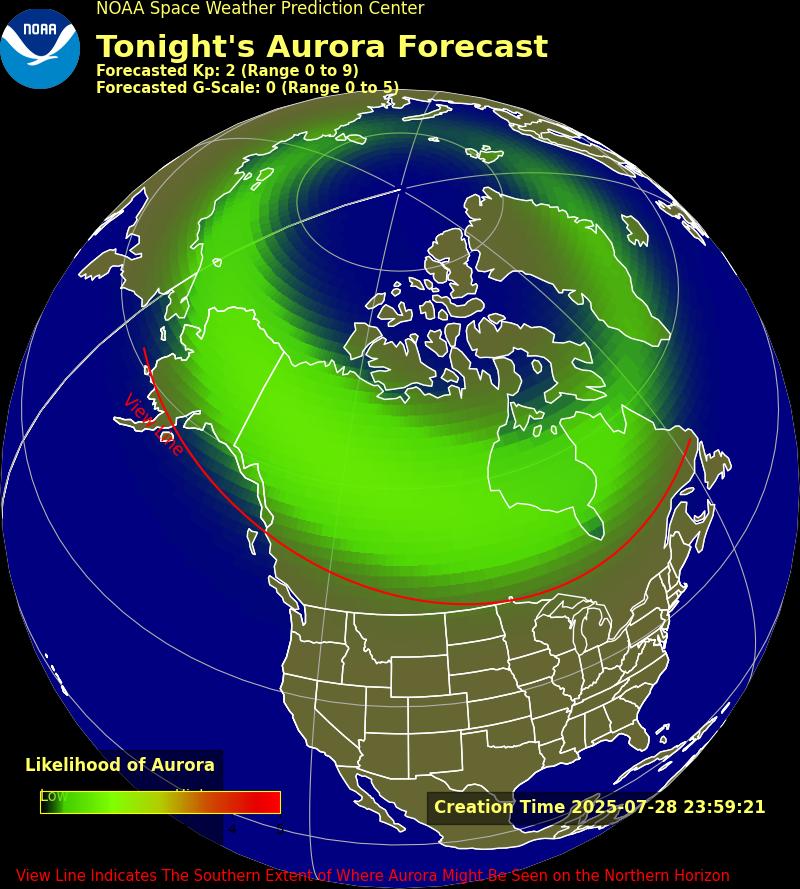
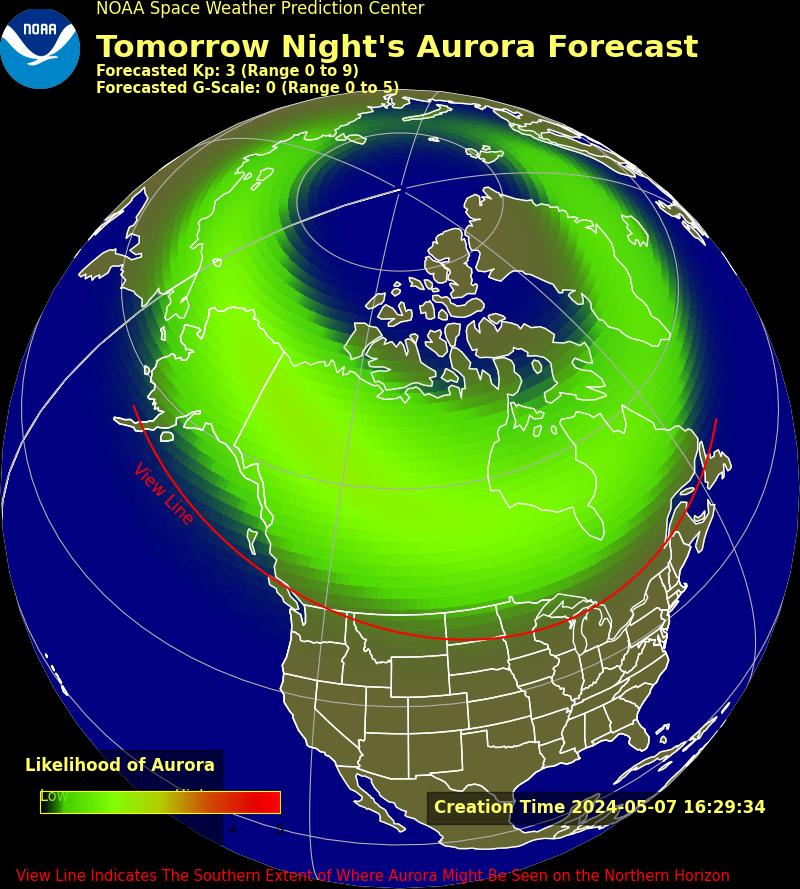
These should have today and tomorrow’s dates on them. If they don’t, click on them to see the latest forecast. This tool is experimental, so even if you’re outside the “viewline” you may be able to see things though they’ll be closer to the horizon. This is just a prediction. Viewline from NOAA
Basics:
What: Possible aurora types: Slight greenish tinge, perhaps brighter columns or curtains in the sky, or a diffuse red glow. Do not be tricked by the normal red/yellow glow from downtown Seattle.
When: Use dateful.com/time-zone-converter to convert aurora prediction times from UTC to Pacific Daylight or Standard Time.
- It is currently: in Seattle time.
- It is currently: in UTC (what the predictions use).
Where: Always look North for aurorae. In West Seattle I recommend Westcrest Park. When clouds are predicted over Puget Sound, so I recommend viewing from Lake Kachess just past Snoqualmie Pass, or even further East. There may also be chances from Sequim or north of Everett.
How: A digital camera with a long exposure will be better at detecting the slightest glow than your eye, but once it gets bright enough you won’t need the camera anymore.
Tips:
- Alice’s Aurora Tip #1: Be patient, keep an eye on the data (see links below) until you see something. Then turn off the data and enjoy.
- Alice’s Aurora Tip #2: Look North (usually, unless the Kp number is very large, then 🤷🏼♀️). Be in a dark place.
- Alice’s Aurora Tip #3: Bring a digital camera or phone with a long-exposure setting. Long-exposure images gather more light than your eye with long exposures you may see the aurora first in a viewfinder or in an image, and with your eye as it brightens.
- Alice’s Aurora Tip #4: It is usually hard to see from Seattle, even when visible. Give your eyes a chance to adapt. Enjoy the stars too.
Kp Number:
The “Kp number” is the key to understanding the aurora forecasts. It is an index that tells you about the disturbance in the magnetic field of the Earth. It ranges from 0-9. I explained Kp over here.
What numbers should you care about?
- Over 5 means possible aurora for Seattle, but higher is better.
- 6: go outside and check.
- 7: go somewhere local that is darker than my street.
- 8: go somewhere darker and farther away, because it is going to be good.
- 9: I turn my life upside down to get to the darkest place I can–and you should too. This is rare.
Current Kp index:
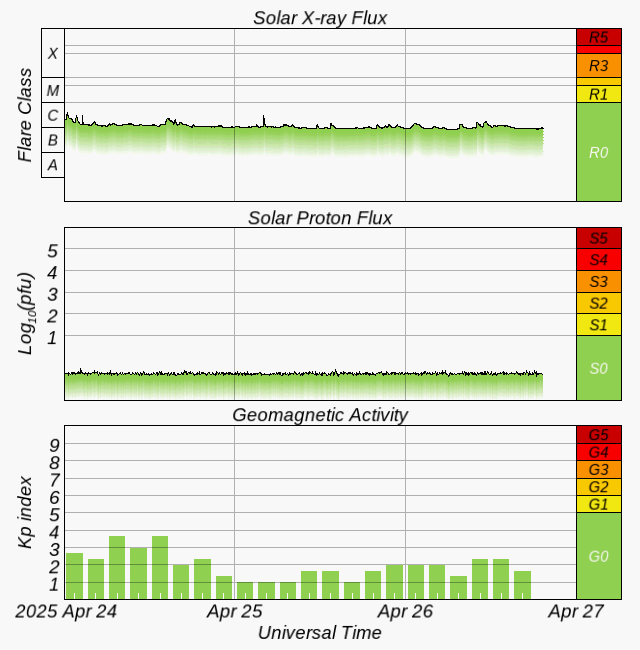
This should have dates within 24+ hours of now. If it does not, click through.
Forecasts for minute-to-minute updates:
The Ovation Model – a prediction: bright green, yellow or red overlapping Seattle means go outside and look.
Soft Serve News – a prediction: Kp over 5 means possible aurora for Seattle, but the higher the better.
Space Weather Live – reporting on current conditions
Nowcast Hp30 Index – Because officially Kp is a 3-hour average I also check the “Hp30” for a similar but faster-reported index (every 30 minutes). Use the same Kp number thresholds as above with this index.
NOAA’s Space Weather Prediction Center – LOTS of info in one place.
Current Activity, Estimated Kp, – a measurement: Kp over 5 is good news. Remember the date/time along the bottom are in Universal Time so subtract 7 or 8 hours depending on daylight savings.
More:
Space Weather Woman has detailed videos that she posts often.
Advanced Solar Wind Charge/Direction – a measurement: scroll down. On the left under “Real Time Solar Wind” is a little speedometer thing labeled “Bz.” When this is pointed towards S/-50/Red we have better auroras in the Northern Hemisphere. When it is pointed the other way, the Southern Hemisphere has better aurora.
Recommended Viewing Locations:
My general stargazing location recommendations.
 Make Your Own Pluto Globe (MAPS as of 7-16-2015!)
Make Your Own Pluto Globe (MAPS as of 7-16-2015!)
My dad has been hard at work on a project for my Plutopalooza New Horizons Phone Home event tomorrow. I promised you crafts, and for those of our who cannot attend the event in person, I’m posting this one here.
This is currently a globe of the very latest map available of Pluto from Björn Jónsson. We will be posting one update tomorrow (July 14, 2015) morning, and possibly one more tomorrow evening. Check back on this post for the final update.
Pluto Foldable Globe 2015-07-13 (First post)
Pluto Foldable Globe 2015-07-14 (Second post — updated 10am Pacific Time Tuesday 7-14-2015)
Pluto Foldable Globe 2015-07-16 (Third post — updated 7-16-2015 with better Charon, probably the last post for several months. I hope to do one more when there’s a high-res map available.)
![]()
~ A l i c e !
 EVENT: Plutopalooza Phone Home
EVENT: Plutopalooza Phone Home
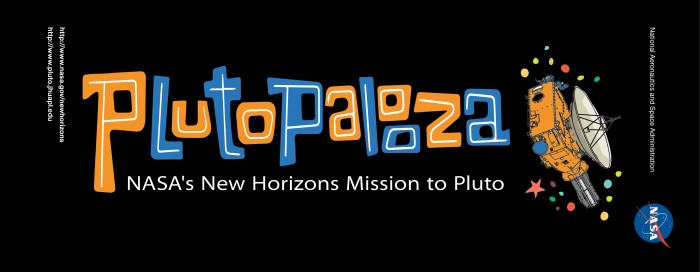
NASA’s New Horizon’s mission will flyby Pluto on the morning of July 14th at 4:49am Pacific Time. As it will spend the full period of the flyby taking photos and data, we won’t hear from the craft about its success until 6:02pm when it “phones home.”
Join me for this nailbiting moment of suspense at High Point Branch Library. As far as I’ve been able to determine at this time, this is the only live local event taking place in Seattle for the Pluto flyby.
- When: 5pm-7pm (phone home broadcast at 6:02pm)
- Where: High Point Branch Library, 3411 S.W. Raymond St., Seattle, WA 98126
- Who: Everyone welcome, as usual.
- Themed craft activity for children approximately ages 3-14
- Short talk about New Horizons aimed at upper elementary through adult
- NASA TV phone home broadcast for everyone (their broadcast commentary is aimed at a teen-adult audience)
P.S. If you want to build a model of the New Horizons craft and bring it with you to the event, I would love to see it. You can also post your West Seattle PlutoTime photos to social media, and tag me: @AlicesAstroInfo.
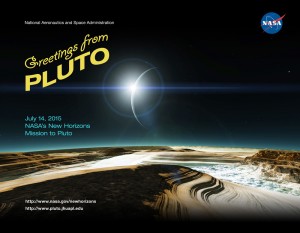
Wish You Were Here!
Here are some useful links:
- This event, advertised by SPL
- New Horizons mission
- NASA TV, Schedule, and Pluto live events schedule
- NASA TV on UStream
- Pluto toolkit and events
- PlutoTime
- Twitter: @NASANewHorizons, #PlutoFlyby, #NASABeyond
Other Pluto Events:
- Plutopalooza at Museum of Flight, Sunday, July 19 2pm-3:30pm
- Pluto celebration at Pacific Science Center, Saturday, July 18
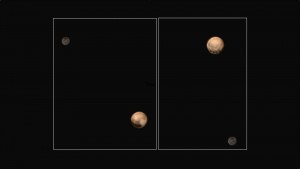
Pluto and Charon in full color–July 1, 2015
This event is my part of the NASA’s Solar System Ambassador program, and thanks to West Seattle Blog for publicizing all of them, and to Seattle Public Libraries for hosting!
Everyone is welcome, see you there!
![]()
~ A l i c e !
 June 20 Summer Solstice Sunset Watch – 2015
June 20 Summer Solstice Sunset Watch – 2015
It’s time for the 25th seasonal sunset watch! Wow. That’s a lot. We should probably have some kind quadrans-quarter-ennial, or icosipenta-seasonal-versary, or quasqui-quadmensiversary celebration, don’t you think?
- When: Saturday, June 20, 2015 at 9:00pm (so come at 8:45pm)
- Actual sunset is supposed to be at 9:11pm, but we have noticed that the Sun sets about 10 minutes earlier than the USNO says, because of the horizon altitude.
- The equinox moment is at Sunday, June 21, 2015 at 9:38 AM … but we’re watching the sunset the night before not the sunrise because of how the park lines up.
- Where: Solstice Park – all the way up the hill from the tennis courts (or, if you’re not in Seattle, wherever you have a view of the western horizon!)
- Who: Everyone welcome, as usual.
Come watch the sunset at Solstice Park in West Seattle. The stone markers have been removed for upkeep, so if they aren’t back yet, we’ll mark the location of the sunset ourselves. The earthworks are still in place, so we can definitely still see the alignment. I’ll be there even if it is cloudy because sometimes the Sun peeks through just as it begins to set, but if it is driving rain or sleet I’m staying home with some hot tea!
If you’re interested – here’s the timing of various celestial events from Seattle, courtesy of the U.S. Naval Observatory Astronomical Applications Department:
Sun and Moon Data for One Day
Sun and Moon Data for One Day
Seattle, King County, WA (Longitude W122° 20′, Latitude N47° 38′)
June 20, 2015 Pacific Daylight Time
SUN
Begin civil twilight 4:30 a.m.
Sunrise 5:11 a.m.
Sun transit 1:11 p.m.
Sunset 9:11 p.m.
End civil twilight 9:51 p.m.MOON
Moonrise 9:38 a.m.
Moon transit 4:44 p.m.
Moonset 11:41 p.m.Closest Primary Moon Phase: First Quarter on June 24, 2015 at 4:02 a.m. (local daylight time)
Phase of the Moon on June 20, 2015: Waxing Crescent with 18% of the Moon’s visible disk illuminated.
This event is my part of the NASA’s Solar System Ambassador program, and thanks to West Seattle Blog for publicizing all of them!
Everyone is welcome, see you there!
![]()
~ A l i c e !
 Aurora Alert: March 17, 2015 G4 Storm
Aurora Alert: March 17, 2015 G4 Storm
3/17/2015: Latest predictions have good numbers for Seattle from darkness until 11pm or 1am. This morning was better. Tonight’s a little unpredictable.
From 3/17/2015 pm:
NOAA Kp index breakdown Mar 18-Mar 20 2015
Mar 18 Mar 19 Mar 20
00-03UT 7 (G3) 4 2 5pm-8pm previous date
03-06UT 7 (G3) 3 2 8pm-11pm previous date
06-09UT 6 (G2) 3 2 11pm previous date 2am
09-12UT 5 (G1) 3 2 2am-5am
12-15UT 4 3 2 5am-8am
15-18UT 3 3 2 8am-11am
18-21UT 3 3 2 11am-2pm
21-00UT 3 4 2 2pm-5pm
Rationale: 18 March is expected to (G1-G3) storm conditions as the
effects from the CME persist. Following the end of CME effects,
geomagnetic activity should remain below G1 conditions for days two and
three (19-20 Mar).
From 3/17/2015 am:
The greatest observed 3 hr Kp over the past 24 hours was 8 (NOAA Scale
G4).
The greatest expected 3 hr Kp for Mar 17-Mar 19 2015 is 8 (NOAA Scale
G3).
NOAA Kp index breakdown Mar 17-Mar 19 2015
Mar 17 Mar 18 Mar 19
00-03UT 2 5 (G1) 4 5pm-8pm previous day (PDT)
03-06UT 5 (G1) 5 (G1) 3 8pm-11pm previous day (PDT)
06-09UT 6 (G2) 4 3 11pm previous day - 2am (PDT)
09-12UT 6 (G2) 3 3 2am-5am (PDT)
12-15UT 8 (G4) 3 3 5am-8am (PDT)
15-18UT 7 (G3) 3 3 8am-11am (PDT)
18-21UT 6 (G2) 3 3 11am-2pm (PDT)
21-00UT 5 (G1) 3 4 2pm-5pm (PDT)
Rationale: Geomagnetic storms reaching the G4 level are expected from
the combined effects of recurrent and transient features on day 1 (17
Mar). Minor storm (G1) conditions are expected to linger into early on
day 2 (18 Mar). Unsettled to active conditions (<G1) are expected for
the remainder.
Aurora viewing from Seattle, basic info, tips, locations and resources.
Basics:
What: Possible aurora. Slight greenish tinge, perhaps brighter columns or curtains in the sky, or a diffuse red glow. Do not be tricked by the normal red/yellow glow from downtown Seattle.
When: Use Timeanddate.com to convert aurora prediction times from UTC to Pacific Daylight or Standard Time.
Where: Always look North for aurorae. When clouds are predicted over Puget Sound, so I recommend viewing from Lake Kachess just past Snoqualmie Pass, or even further East. There may also be chances from Sequim or north of Everett.
How: A digital camera with a long exposure will be better at detecting the slightest glow than your eye, but once it gets bright enough you won’t need the camera anymore.
Tips (from my Twitter stream):
- Alice’s Aurora Tip #1: Be patient, keep an eye on the data (see links below) until you see something. Then turn off the data and enjoy.
- Alice’s Aurora Tip #2: Look North. Be in a dark place.
- Alice’s Aurora Tip #3: Bring a digital camera or phone with a long-exposure setting. Long-exposure images gather more light than your eye with long exposures you may see the aurora first in a viewfinder, and with your eye as it brightens.
- Alice’s Aurora Tip #4: It is usually hard to see from Seattle, even when visible. Give your eyes a chance to adapt. Enjoy the stars too.
Advanced:
When Kp levels surpass 5 it is worth starting to check in. In Seattle, we hope for Kp levels of 6 or greater for the best chance to see the aurora. I explained Kp over here.
You should watch these forecasts for minute-to-minute updates:
The Ovation Model – a prediction: bright green, yellow or red overlapping Seattle means go outside and look.
Soft Serve News – a prediction: Kp over 5 means possible aurora for Seattle, but the higher the better. If it hits 6 go outside.
Current Activity – a measurement: If the yellow/orange/red looks like it is overlapping the border between the US and Canada, the aurora might be visible from Seattle. Again, the closer the better.
Estimated Kp – a prediction: Kp over 5 is good news. Remember the date/time along the bottom are in Universal Time so subtract 7 hours.
*NEW* Advanced Solar Wind Charge/Direction – a measurement: scroll down. On the left under “Real Time Solar Wind” is a little speedometer thing labeled “Bz.” When this is pointed towards S/-50/Red we have better auroras in the Northern Hemisphere. When it is pointed the other way, the Southern Hemisphere has better aurora.
NOAA’s Space Weather Prediction Center – lots of info in one place.
Cloudcover prediction for tonight at 11pm:

This image should have today’s date on it. If it does not, click on the image and choose “Sky Cover, 11pm” from the table on the left.
Cloudcover information from NOAA
*NEW* Recommended Viewing Locations:
My general stargazing location recommendations.
 Conjunction, Seattle, Today 2-21-2015 5:30pm
Conjunction, Seattle, Today 2-21-2015 5:30pm
Come watch the conjunction with me today from 5:30pm-6:15pm from the South end of the beach at Lincoln Park. I’ll be just across from the swings, with binoculars.
It will be pretty.
-Alice
P.S. Since I’ll have a tripod or two set up for this, if you bring your dog could you leash them while they’re near the equipment please? Thanks, that’s a big help! :)
 Winter Solstice Sunset Watch – 2014
Winter Solstice Sunset Watch – 2014
It’s time for the 23rd seasonal sunset watch!!
- When: Sunday, December 21st at 4:05pm (so come at 3:45pm)
- Actual sunset is supposed to be at 4:20pm, but we have noticed that the Sun sets about 10 minutes earlier than the USNO says it does, so I’ve moved the time of our sunset watch up so we don’t miss it.
- The solstice moment is at 3:03pm… but we’re watching the sunset because of how the park lines up.
- Where: Solstice Park – all the way up the hill from the tennis courts (or, if you’re not in Seattle, wherever you have a view of the western horizon!)
- Who: Everyone welcome, as usual.
Come watch the sunset at Solstice Park in West Seattle. We’ll see if the sunset lines up with the placed marker. I’ll be there even if it is cloudy because sometimes the Sun peeks through just as it begins to set, but if it is driving rain or sleet I’m staying home with some hot tea!
If you’re interested – here’s the timing of various celestial events from Seattle, courtesy of the U.S. Naval Observatory Astronomical Applications Department:
Sun and Moon Data for One Day
The following information is provided for Seattle, King County, Washington (longitude W122.3, latitude N47.6):
Solstice Moment: Sunday, December 21, 2014 at 3:03 PM
Universal Time: Dec 21 23 03Sunday
21 December 2014 Pacific Standard TimeSUN
Begin civil twilight 7:19 a.m.
Sunrise 7:55 a.m.
Sun transit 12:08 p.m.
Sunset 4:20 p.m.
End civil twilight 4:56 p.m.MOON
Moonset 3:41 p.m. on preceding day
Moonrise 7:11 a.m.
Moon transit 11:54 a.m.
Moonset 4:38 p.m.
Moonrise 8:07 a.m. on following dayNew Moon on 21 December 2014 at 5:37 p.m. Pacific Standard Time.
This event is my part of the NASA’s Solar System Ambassador program, and thanks to West Seattle Blog for publicizing all of them!
Everyone is welcome, see you there!
![]()
~ A l i c e !
 Where to Find AstroInfo?
Where to Find AstroInfo?
What’s become of me? Like many other vaguely-successful authors, you can now find my work in more places and less often back here at home. This is great news for me, tough news for trying to follow me. I’m not gone for good, but check these locations for more recent articles:
- West Seattle Blog — Skies over West Seattle — more or less monthly articles
- 365 Days of Astronomy — monthly podcasts
- KOMO NewsRadio — occasional short interviews, usually with Tom and Jane on weekday afternoons
- Twitter — musings, discussions, astro stuff I think is cool, announcements of events and interviews
Thanks for keeping up!
-Alice
